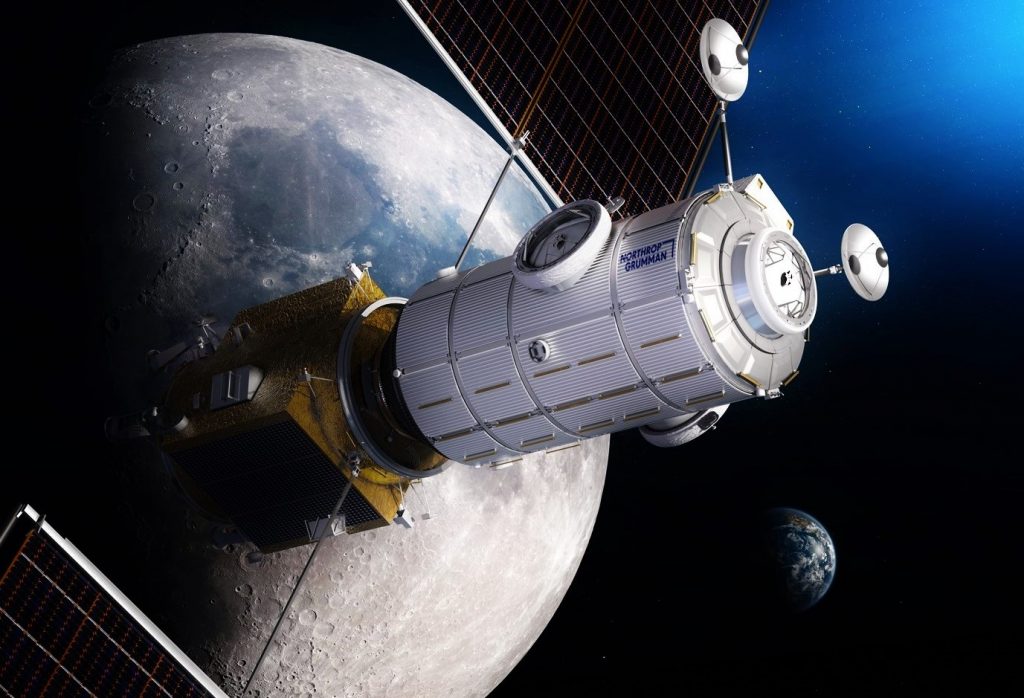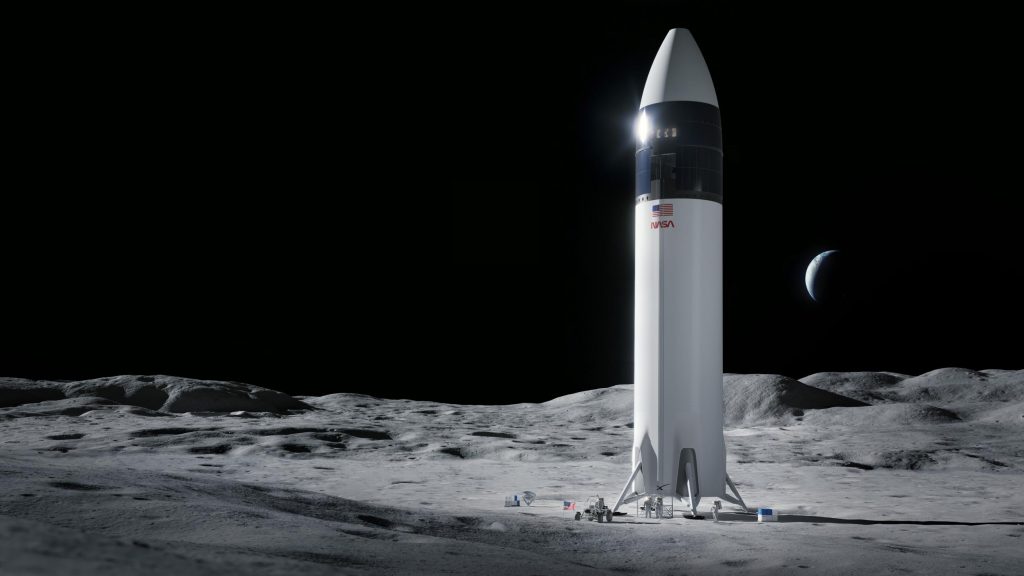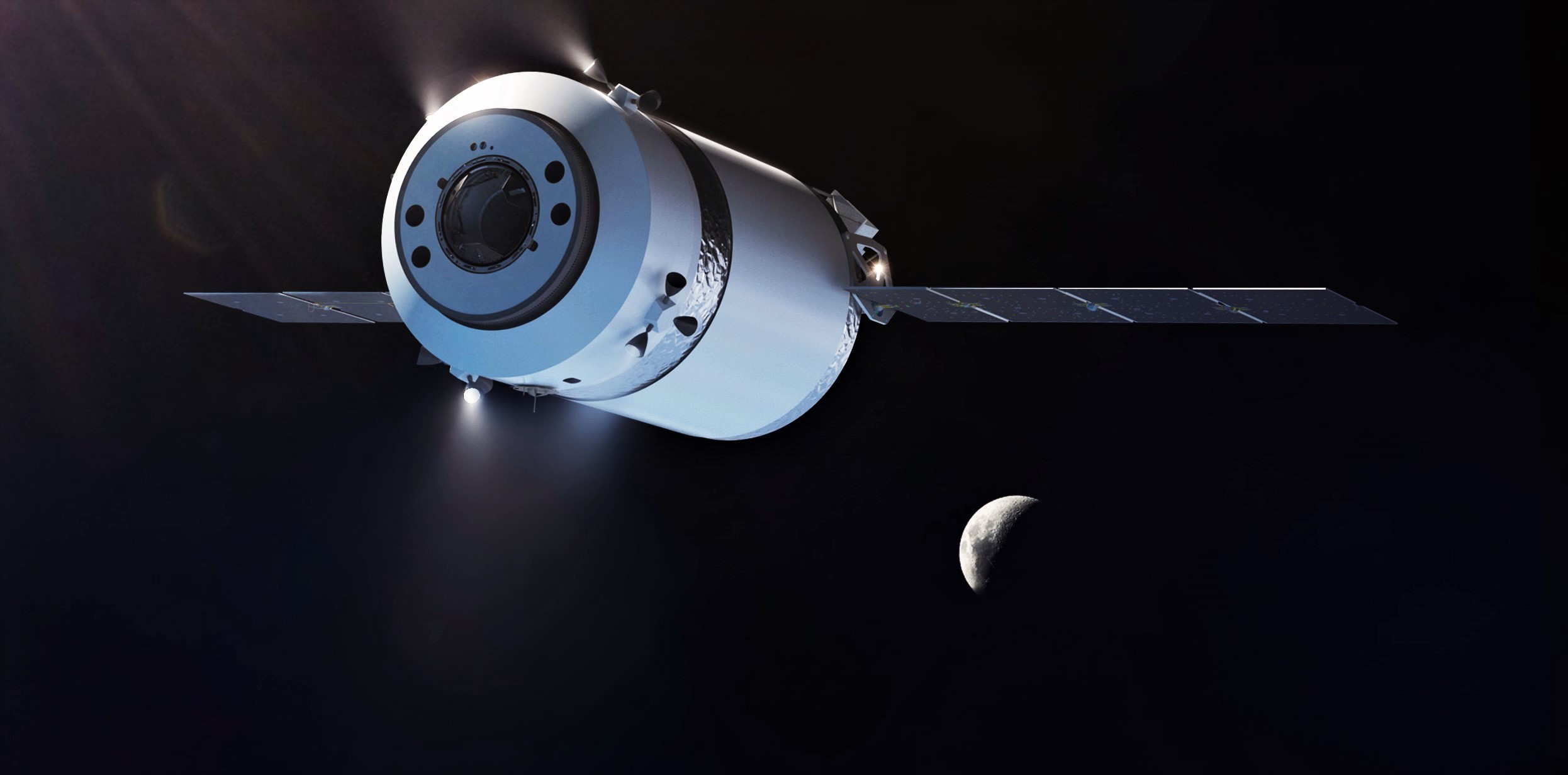In a new Request For Information (RFI) quietly released by NASA on April Fools’ Day, the space agency appears to have indirectly asked SpaceX to determine the fate of its ‘Dragon XL’ lunar cargo spacecraft.
In March 2020, NASA announced that it had selected SpaceX to deliver the bulk of pressurized and unpressurized cargo it would need to crewed and operate a proposed “Gateway” lunar space station for the first several years of its existence. To accomplish that task, SpaceX would develop a heavily-modified single-use version of its Dragon 2 spacecraft with more propellant storage, more space for cargo, and a range of other design changes.
Known as Dragon XL, that spacecraft would weigh around 15 to 16 tons (~33,000-35,000 lb) at liftoff and likely require a fully or partially expendable Falcon Heavy launch for each mission to the Moon. At the time, it was a fairly balanced and reasonable choice on NASA’s part, leveraging existing investments and experience with SpaceX and Dragon and erecting no major technical hurdles. However, more than two years later, NASA still hasn’t started work on the contract.
That’s why the new April 1st RFI is so intriguing. NASA begins by referencing fine print in the original 2018 Gateway Logistics Services (GLS) Request For Proposals (RFP) that allows the agency to continue receiving and considering new proposals from new and existing providers throughout the program’s planned 17-year lifespan. The agency says its primary motivations are for “information and planning purposes, to request feedback, to promote competition,” and to “[determine] whether to conduct an on-ramp in 2022.” NASA doesn’t specify what exactly that means, but in the context of the rest of the text, it appears that the agency wants to use this RFI to help determine whether or not to finally “on-ramp” its existing Dragon XL contract with SpaceX.
However, the document gets far more interesting and suggestive. Later, NASA spells out what exactly it wants respondents to discuss. In a list of eight main questions, the agency repeatedly hints at a desire to substantially expand the scope of GLS. In question #8, NASA asks if, to help “create a vibrant supply chain in deep space,” respondents would be able to deliver additional cargo to “cislunar orbits [and] the lunar surface” or offer a “dedicated delivery tug capability” or “rapid response delivery service.”
NASA also asks for information on ways prospective GLS providers could “[minimize] the cost impact of…requirement changes,” “reduce operating costs,” and “minimize upfront costs.” In questions #2 and #3, NASA requests details about “new and/or innovative capabilities” that could “significantly increase…cargo delivery capacity” within “the next five years” and states that “offerors exceeding the minimum [cargo] capabilities may be viewed more favorably.”

NASA seems very interested in the potential benefits of alternative deep space cargo transport services that are both cheaper and more capable than Dragon XL. Between the lines, however, the RFI also reads as if it was written directly to SpaceX. The first question is perhaps the most telling: “Is your company interested in on-ramping to the GLS contract to provide Logistics Services as described in the original solicitation?”
SpaceX is the only company with an existing GLS contract that it could “on-ramp to” – a roundabout way to say “start work on”. In the following questions, NASA then repeatedly expresses interest in cargo transport capabilities well beyond the original contract’s requirements and asks about innovative new capabilities that could enable such improvements. NASA even “recognizes” and hints at a willingness to consider unorthodox solutions that, for example, might require “more than one launch” per cargo delivery or help “minimize upfront costs to the Government.” Put simply, while it does open the door for just about any US company to inform NASA about new GLS options, it’s hard not to conclude that this new RFI is at least partially designed to give SpaceX an opportunity to propose Dragon XL alternatives or upgrades.

The most obvious option: Starship. Through the Human Landing System (HLS) program, NASA has already committed to investing at least $3 billion to develop a crewed Starship Moon lander and the fully-reusable launch vehicle and refueling infrastructure required to launch and operate it. With barely any modification, the Starship architecture SpaceX and NASA are already developing could be used to deliver dozens of tons of pressurized cargo to cislunar space, lunar orbit, the Gateway, the lunar surface, or just about anywhere else NASA wants. Leveraging that significant investment would also tick almost every box in NASA’s new RFI by drastically reducing upfront and total development costs, helping to stimulate a “vibrant” deep space supply chain, and beating Dragon XL’s cargo capabilities by a factor of 5, 10, or even 20+.
Of course, there are technical challenges and reasons to believe that Starship can’t easily replace Dragon XL. Even Dragon XL risked running into Gateway’s visiting vehicle mass limit of just 14 tons. Starship would likely weigh at least 100-200 tons – more than the entire Gateway. Dragon XL would use non-cryogenic propellant and is baselined to spend at least 6-12 months at a time at the Gateway. NASA has also studied the possibility of using Dragon XL as a crew cabin or bathroom to temporarily relieve Gateway’s extremely cramped habitable volume. Starship’s main engines use cryogenic propellant that wants nothing more than to warm up and boil into gas, making it far harder to keep at the station for months at a time. Those problems are likely solvable, but it’s still worth noting that Starship is not a perfect fit right out of the box.
The RFI could also end with a whimper if SpaceX simply tells NASA that it’s happy to proceed with Dragon XL as proposed. Only time will tell. NASA is planning to hold an industry day on April 20th to better explain the RFI’s goals and wants responses by May 31st, 2022, after which the agency will decide whether or not to follow up with a solicitation or on-ramp Dragon XL.











